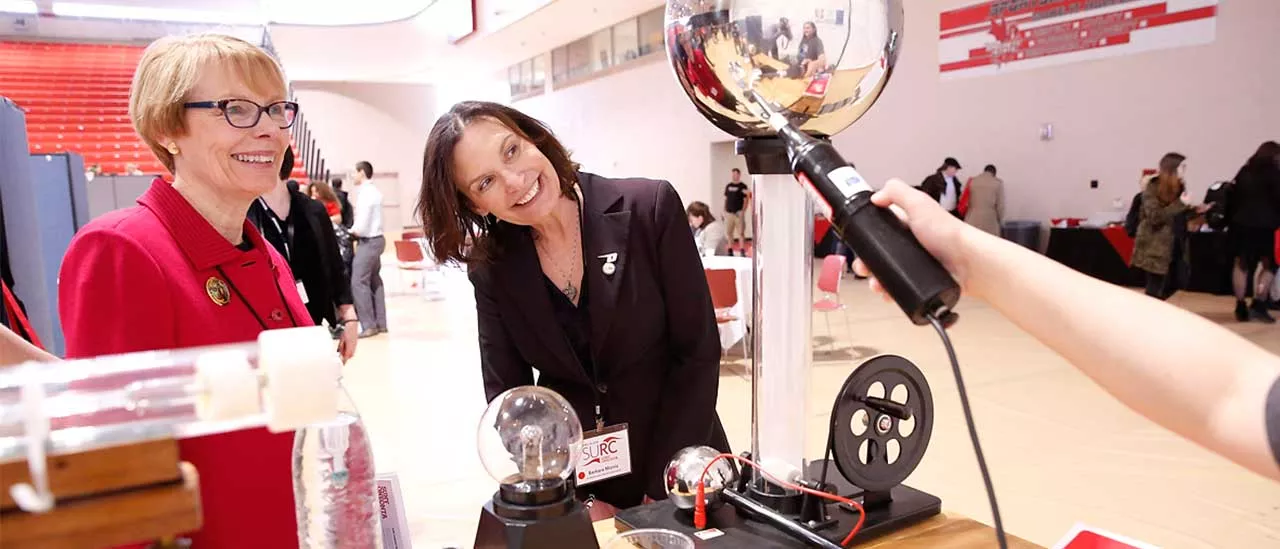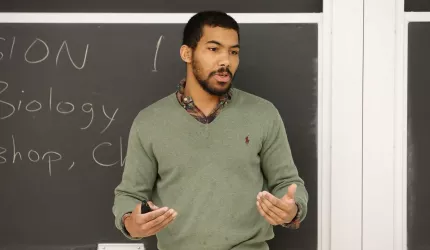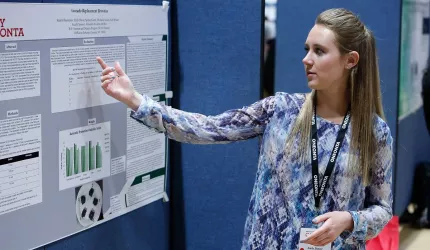Students from 28 SUNY colleges and universities presented their research and creative activity projects during the SUNY Undergraduate Research Conference (SURC) on Friday, April 20, at SUNY Oneonta.
Every spring, SURC brings together undergraduate researchers and faculty mentors for two daylong programs of presentations, performances, art displays and poster sessions held on two separate campuses. The second SURC event is Saturday, April 21, at Monroe Community College in Rochester.
Students presented 179 research projects in two poster sessions, and another 100 projects in oral presentations throughout the day. The projects covered a wide variety of disciplines, with topics ranging from “The Effect of Water Availability on Reproductive Outcomes in Bean Beetles” to “The Significance of Food Imagery in the Bible.”
Students and faculty attended workshops on topics such as “Engaging Underrepresented Students in Applied Learning Opportunities” and “So, You Want to be an Entrepreneur?”
The day also included a SUNY Graduate School Fair, a sustainability tour of the SUNY Oneonta campus, a planetarium presentation, and the chance to explore hands-on learning activities at the A.J. Read Science Discovery Center.
Fourteen SUNY Oneonta students presented performance and visual art sessions encompassing slam poetry, theatrical design, sculpture, piano and DJ’ing in the Fine Arts Center.
SUNY Oneonta dietetics major Emily Shaver presented a poster about a food science class project testing how much avocado could be substituted for butter in a brownie recipe without negatively affecting its taste. “We wanted to reduce the saturated fat by replacing the butter with the healthier fat from the avocado,” she said. “The most popular version was the 25% avocado recipe, but I liked the one with 100% avocado. It was creamier when you bit into it, and a little more dense.”
Brandon Bonura, a SUNY Oneonta computer science major from Queens, demonstrated a NAO robot he and another student programmed to use facial and speech recognition to play tic tac toe with a human partner. He said working on the research project gave him a chance to apply his classroom knowledge.
“It’s definitely more of a learn-as-you-go kind of thing because you’re constantly debugging and trying to figure out what’s wrong. I think one of the most important parts of this project is how we could expand on it. We’ll be back next year!”


